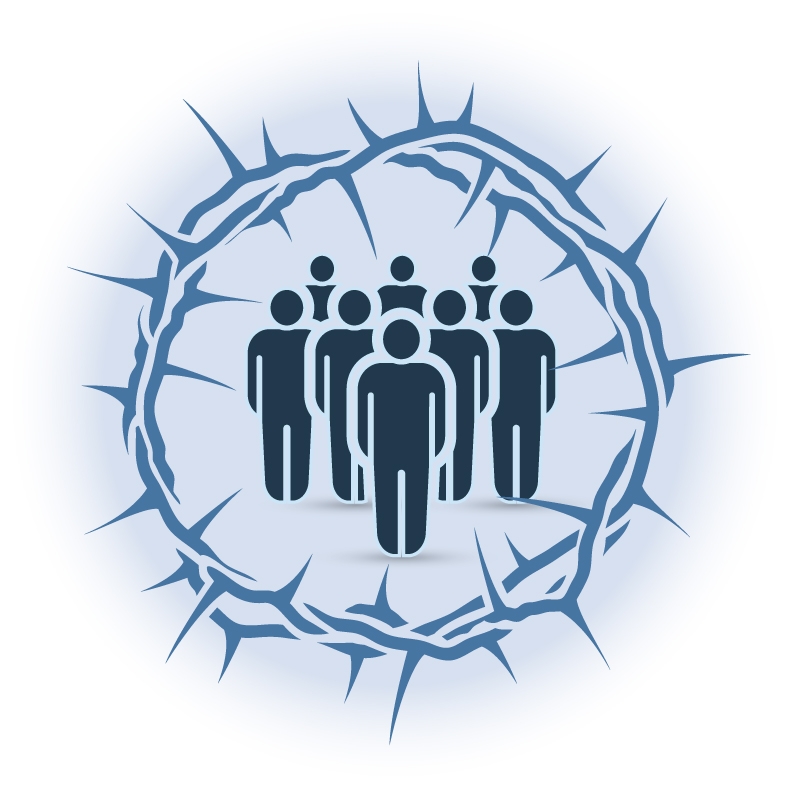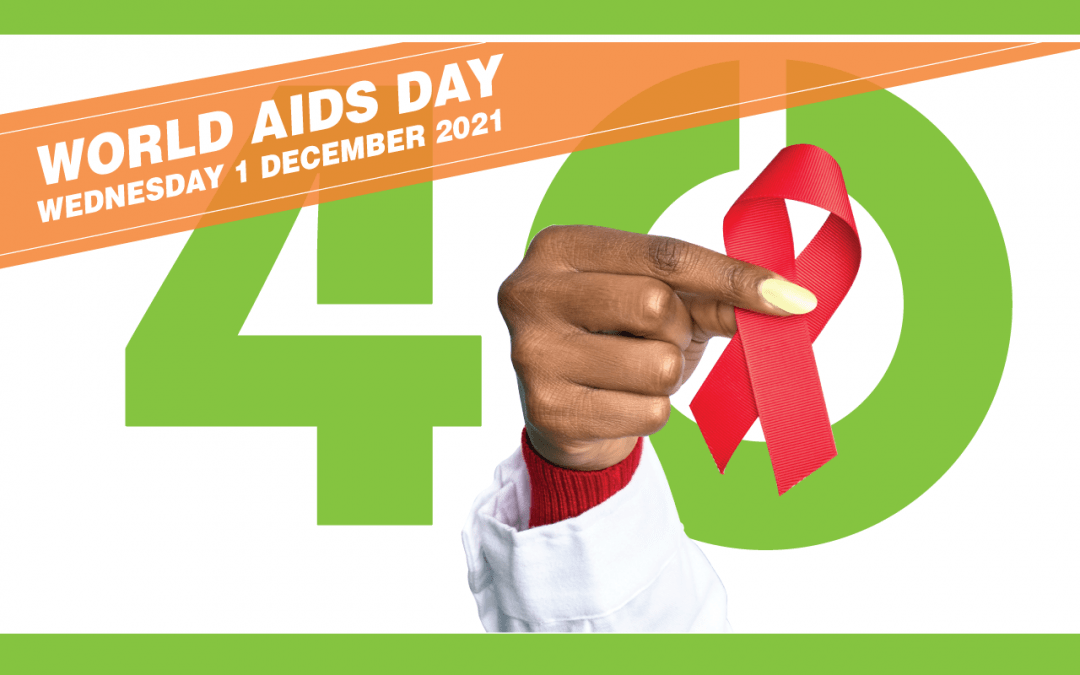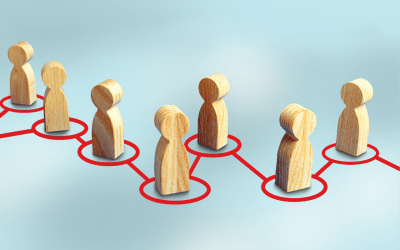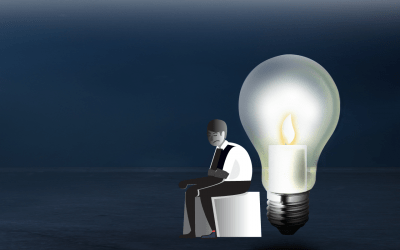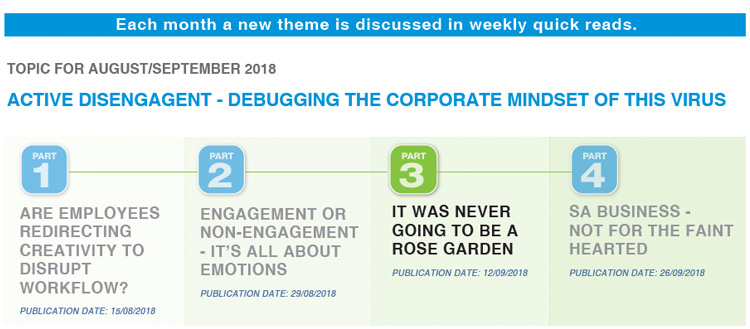
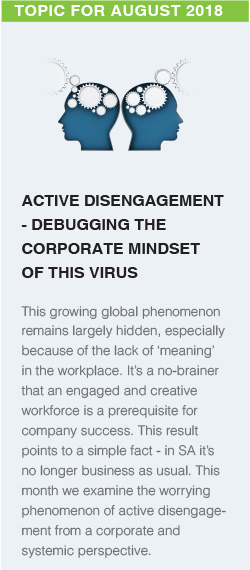 Let’s be clear, there’s no magic wand to create a perfect working environment – but employee wellbeing remains an ideal well worth striving for.
Let’s be clear, there’s no magic wand to create a perfect working environment – but employee wellbeing remains an ideal well worth striving for.
With a better understanding of the inner mental and emotional experience of employees, managers can acquire skills to redirect stuck emotional energy into productive application. This can serve to increase workforce resilience, even in the face of challenges such as technological disruption. It begins with a deeper understanding of the emerging workplace context.
In the previous posting we examined those basic emotions that either lead to employee engagement, or non-engagement. We included the notion of active disengagement and showed how this was not only of growing global concern but was particularly worrying in the South African workplace.
We suggested that the workplace experience of
(i) appreciation
(ii) positive expectation
(iii) self-confidence
(iv) rich and supportive relationships, enables full and joyful engagement.
This provides a clear and simple indicator of how management can approach individuals and teams to help them to become more motivated.
Conversely, we showed how the experience of frustration, anxiety, loss of recognition, and aversion to engaging with people and activities that ‘go against the grain’, generates non-engagement, and can even lead to active disengagement.
So, in order to better understand how to deal with these ‘emotional states’, it helps to get a better understanding external context, the working environment, and how that impacts on the internal mental and emotional context of the employee.
Let us be clear; there is no magic wand with which to create a perfect working environment. So, employee wellbeing indeed remains an ideal. But it is one worth striving after. In today’s dynamically changing world the workplace is in a constant state of flux. This might be a result of economic and political factors and market conditions. But especially with the introduction into the workplace of ever newer applications of technology, work functions are changing rapidly. This all leads to the situation described by the well-known VUCA acronym. It is well-worth revisiting.
- ‘Volatility’ – things change unexpectedly
- ‘Uncertainty’ – the future is difficult to predict
- ‘Complexity’ – there are so many more unexpected factors influencing the workplace
- ‘Ambiguity’ – difficult to anticipate whether a development, such as an event, or new technology, might represent either a threat, or opportunity, or both.
Simply put, the VUCA world by implication points to enhanced resilience becoming a cardinal feature of workplace wellbeing. We will examine the nature of the all-important resilient ‘emotional state’ going forward. But for now, a useful way of thinking about wellbeing (let us see that as the workforce’s ability to cope with change in an engaged way) is to apply the ‘Salutogenesis’ concept. Aaron Antonovsky coined the word – it simply means ‘focusing on the source of wellbeing’. To this he added the concept of ‘coherence’. To keep is simple, just see that as ‘enabling good fit and flow’. Coherence then suggests that the inner mental context, with the accompanying emotions we have examined, is well adjusted to the challenges and opportunities presenting by the dynamic external environment. Now in respect of this adjustment that enables coherence Antonovsky identified three further essential experiences, namely; comprehensibility, manageability, and meaningfulness.
- ‘Comprehensibility’: Does the individual or team have sufficient ‘grasp’ or understanding of the situation? Do they ‘get’ what it is about? Do they have access to the necessary information that is presented in an appropriate form to make sense of what needs to be done? It is clear that this factor has significant implications on the role of clearly defined purpose. It will also have significant implications on employee motivation, as well as on the negative effects, especially disempowerment and anxiety, that accompanies limited understanding.
- ‘Manageability’: Does the individual or team really know what is expected of them, do they understand how that is to be delivered and how performance is measured? Do they have the necessary tools, the skills, and competencies? And, above all, have they been thoroughly trained and nurtured through the learning process, to a sense of confidence in their abilities?
- ‘Meaningfulness’: Does the individual or team grasp the significance of what they are doing? Do they appreciate the value they bring to the organisation? Are they have the opportunity of sharing in a sense of accomplishment of a job well done – especially with the knowledge of how that brings value to society?
Given what we have already previously examined about emotions as ‘energy seeking purpose’ we can then correlate Antonovsky’s coherence enabling factors to the ‘glad’ experience; and hence to workplace wellbeing.
Those three factors then together offer a rich field for further examination and research. They can be valuable in strategizing ways of generating an engaged and creative workforce. In consciously addressing them any employee body ought to experience a greater quality of workplace wellbeing. This becomes increasingly important in the face of the low levels of global workplace engagement – and it is especially vital against the worrying levels of active disengagement in South Africa.
We will examine the South African situation further next week.
YOU CAN COMMUNICATE DIRECTLY WITH US, WITHOUT OBLIGATION, ON EMAIL, OR BY REQUESTING A SKYPE MEETING. WE LOOK FORWARD TO GENERATIVE CONVERSATIONS.
Email: [email protected] Skype: claudiuspvwyk
Now, go test these insights to enable engaged wellbeing

